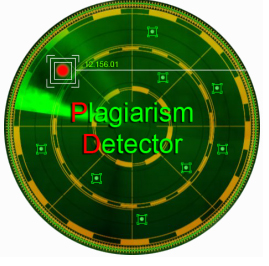AN ANALYSIS OF ILLOCUTIONARY ACTS IN MICHELLE OBAMAS SPEECH AT THE 2020 DEMOCRATIC NATIONAL CONVENTION
Abstract
Many speakers convey the message to make the speech partner do something according to what the speaker intended through his/her utterance, which is called an illocutionary speech act. This study aims to analyze the types and functions of illocutionary acts in Michelle Obama's speech at the 2020 Democratic National Convention. This study was conducted by using a qualitative method and the data is analyzed descriptively. the data is the utterances of Michelle Obama in her speech video at the 2020 Democratic National Convention which was transcribed into words. Data can be in the form of sentences uttered by the speaker. Assertive illocutionary acts were employed to convince the audience of the message conveyed, through actions such as stating, informing, claiming, expressing opinions, providing information, convincing, assessing, and describing. Directive illocutionary acts were used to influence the listener to take certain actions, such as through invitations, advice, and expressions of desire. On the other hand, expressive illocutionary acts were utilized to express emotions towards the actions of the listener and the situations at occur, such as expressing gratitude, appreciation, respect, and disappointment. This research provides a deeper understanding of the use of illocutionary acts in political speech and Michelle Obama's contribution to influencing and inspiring the audience.
Keywords: Illocutionary acts, political speech, speech acts
Full Text:
PDFReferences
Afrianto, A., & Widianto, W. (2022). Mythological and Historical Representation: A Critical Discourse Analysis on Aeschyluss Poems the Sacrifice of Iphigenia and The Battle of Salamis. Journal of Arts and Education, 2(1).
Austin, J. L. (1975). How to Do Things with Words. Oxford: Oxford University Press.
Beard, A. (2000). The language of politics (Vol. 121). London: Routledge.
Creswell, J. W., & Creswell, J. D. (2018). Research Design: Qualitative, Quantitative, and Mixed Methods Approaches (Fifth). California: SAGE Publications Ltd.
Drezner, D. W. (2020). Immature leadership: Donald Trump and the American presidency. International Affairs, 96(2), 383-400.
Gul, I., & Rahmawelly, T. V. (2019). An Analysis of Omission in Students English Writings. Teknosastik: Jurnal Bahasa dan Sastra, 16(2), 55-59.
Handayani, N. V. (2015). The Use of Expressive Speech Acts in Hannah Montana Session 1. Register Journal, 8(1), 99-112.
Haucsa, G. M., Marzuki, A. G., Alek, A., & Hidayat, D. N. (2020). Illocutionary Speech Acts Analysis in Tom Cruise's Interview. Academic Journal Perspective: Education, Language, and Literature, 8(1), 11-19.
Hutauruk, M., & Puspita, D. (2020). A Metapragmatic Analysis: A Study of Pragmatic Failure Found in Indonesian EFL Students. Linguistics and Literature Journal, 1(2), 62-69.
Isanabiah, I., & Fitrawati, F. (2022). Analysis of Illocutionary Acts Performed in to Fluency's Youtube Channel. English Language and Literature, 11(3), 336-364.
Kuswoyo, H. (2016). Thematic Structure in Barack Obamas Press Conference: A Systemic Functional Grammar Study. Advances in Language and Literary Studies, 7(2), 257-267.
Kuswoyo, H., & Siregar, R. A. (2019). Interpersonal Metadiscourse Markers as Persuasive Strategies in Oral Business Presentation. Lingua Cultura, 13(4), 297-304.
Kuswoyo, H., & Susardi, S. (2016). Thematic progression in EFL students academic writings: A systemic functional grammar study. Teknosastik: Journal Bahasa dan Sastra, 14(2), 39-45.
Levinson, S. C., Levinson, S. C., & Levinson, S. (1983). Pragmatics. Cambridge: Cambridge University Press.
Maulidiyah, L., Hidayat, D. N., Alek, A., & Defianty, M. (2021). The Analysis of Illocutionary Acts Used by Sherly Annavita in Indonesia Lawyers Club. Journal of Languages and Language Teaching, 9(1), 53-60.
Nassaji, H. (2015). Qualitative and Descriptive Research: Data Type Versus Data Analysis. Language Teaching Research, 19(2), 129-132.
Puspita, D., & Pranoto, B. E. (2021). The attitude of Japanese newspapers in narrating disaster events: Appraisal in critical discourse study. Studies in English Language and Education, 8(2), 796-817.
Sameer, I. H. (2017). The Analysis of Speech Acts Patterns in Two Egyptian Inaugural Speeches. Studies in English Language and Education, 4(2), 134-147.
Sari, P. I., & Pranoto, B. E. (2022). An Analysis of Illocutionary Act and Perlocutionary Act Towards the Queen Elizabeths Speech Entitled We Will Succeed and Better Days Will Come. Linguistics and Literature Journal, 3(1), 24-33.
Searle, J.R. (1969). Speech Act (An Essay in The Philosophy of Language). Cambridge: Cambridge University Press.
Searle, J.R. (1979). Expressing and Meaning: Studies in the Theory of Speech Acts. Cambridge: Cambridge University Press.
Searle, J. R. (1998). Mind, Language and Society: Philosophy in The Real World. Basic books.
Suprayogi, S., Puspita, D., Nuansa, S., & Sari, K. (2021). The Discursive Construction of Indigenous Belief Issue in The Jakarta Post. Language Literacy: Journal of Linguistics, Literature, and Language Teaching, 5(2), 417-430.
Unggul, G. M., & Gul, I. (2017). An Analysis of Gerund and To Infinitive in Argumentative Essays. Teknosastik: Journal Bahasa dan Sastra, 15(1), 1-6.
Washington Post. (2020, August 17). Michelle Obama's Full Speech at the 2020 Democratic National Convpranotoridention. YouTube.
Yule, G. (1996). Pragmatics. Oxford: Oxford University Press.
Yusanti, G., Ningrum, A. S. B., Aini, N., & Al Aziz, E. N. (2022). Speech Act Analysis on Joe Biden's Speech about Covid-19. JURNAL ARBITRER, 9(1), 57-70.
DOI: https://doi.org/10.33365/llj.v4i2.3041
Refbacks
- There are currently no refbacks.
Linguistics and Literature Journal
Published by Universitas Teknokrat Indonesia
Organized by Faculty of Arts and Education
Jl. Zainal Abidin Pagaralam, No.9-11, Labuhanratu, Bandarlampung, Indonesia
Telepon : 0721 70 20 22
W : http://jim.teknokrat.ac.id/index.php/linguistics_and_literature/index










